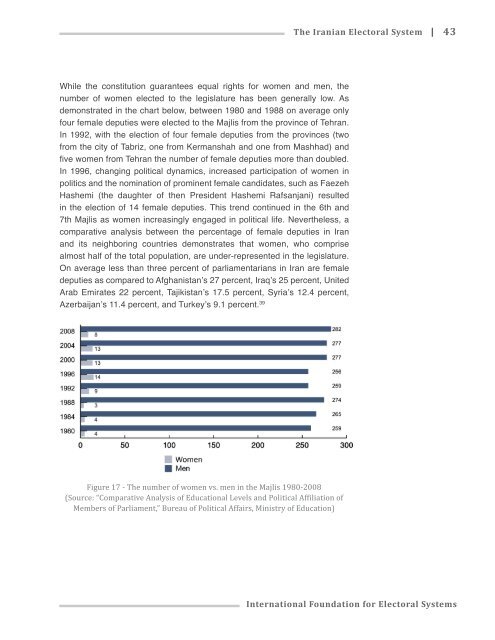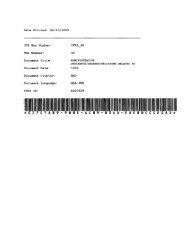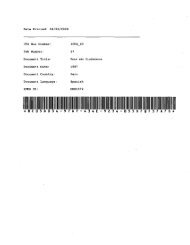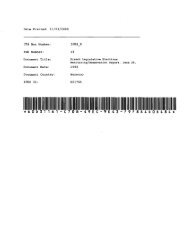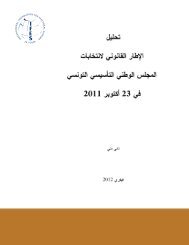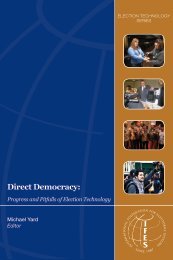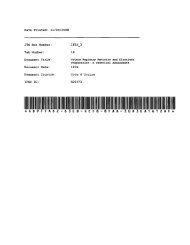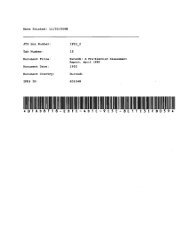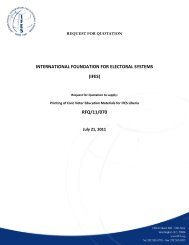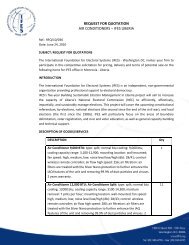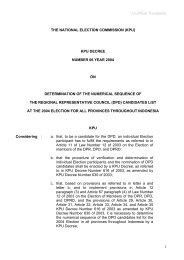Duality by Design: The Iranian Electoral System - IFES
Duality by Design: The Iranian Electoral System - IFES
Duality by Design: The Iranian Electoral System - IFES
Create successful ePaper yourself
Turn your PDF publications into a flip-book with our unique Google optimized e-Paper software.
<strong>The</strong> <strong>Iranian</strong> <strong>Electoral</strong> <strong>System</strong><br />
43<br />
While the constitution guarantees equal rights for women and men, the<br />
number of women elected to the legislature has been generally low. As<br />
demonstrated in the chart below, between 1980 and 1988 on average only<br />
four female deputies were elected to the Majlis from the province of Tehran.<br />
In 1992, with the election of four female deputies from the provinces (two<br />
from the city of Tabriz, one from Kermanshah and one from Mashhad) and<br />
five women from Tehran the number of female deputies more than doubled.<br />
In 1996, changing political dynamics, increased participation of women in<br />
politics and the nomination of prominent female candidates, such as Faezeh<br />
Hashemi (the daughter of then President Hashemi Rafsanjani) resulted<br />
in the election of 14 female deputies. This trend continued in the 6th and<br />
7th Majlis as women increasingly engaged in political life. Nevertheless, a<br />
comparative analysis between the percentage of female deputies in Iran<br />
and its neighboring countries demonstrates that women, who comprise<br />
almost half of the total population, are under-represented in the legislature.<br />
On average less than three percent of parliamentarians in Iran are female<br />
deputies as compared to Afghanistan’s 27 percent, Iraq’s 25 percent, United<br />
Arab Emirates 22 percent, Tajikistan’s 17.5 percent, Syria’s 12.4 percent,<br />
Azerbaijan’s 11.4 percent, and Turkey’s 9.1 percent. 39<br />
Figure 17 - <strong>The</strong> number of women vs. men in the Majlis 1980-2008<br />
(Source: “Comparative Analysis of Educational Levels and Political Affiliation of<br />
Members of Parliament,” Bureau of Political Affairs, Ministry of Education)<br />
International Foundation for <strong>Electoral</strong> <strong>System</strong>s


